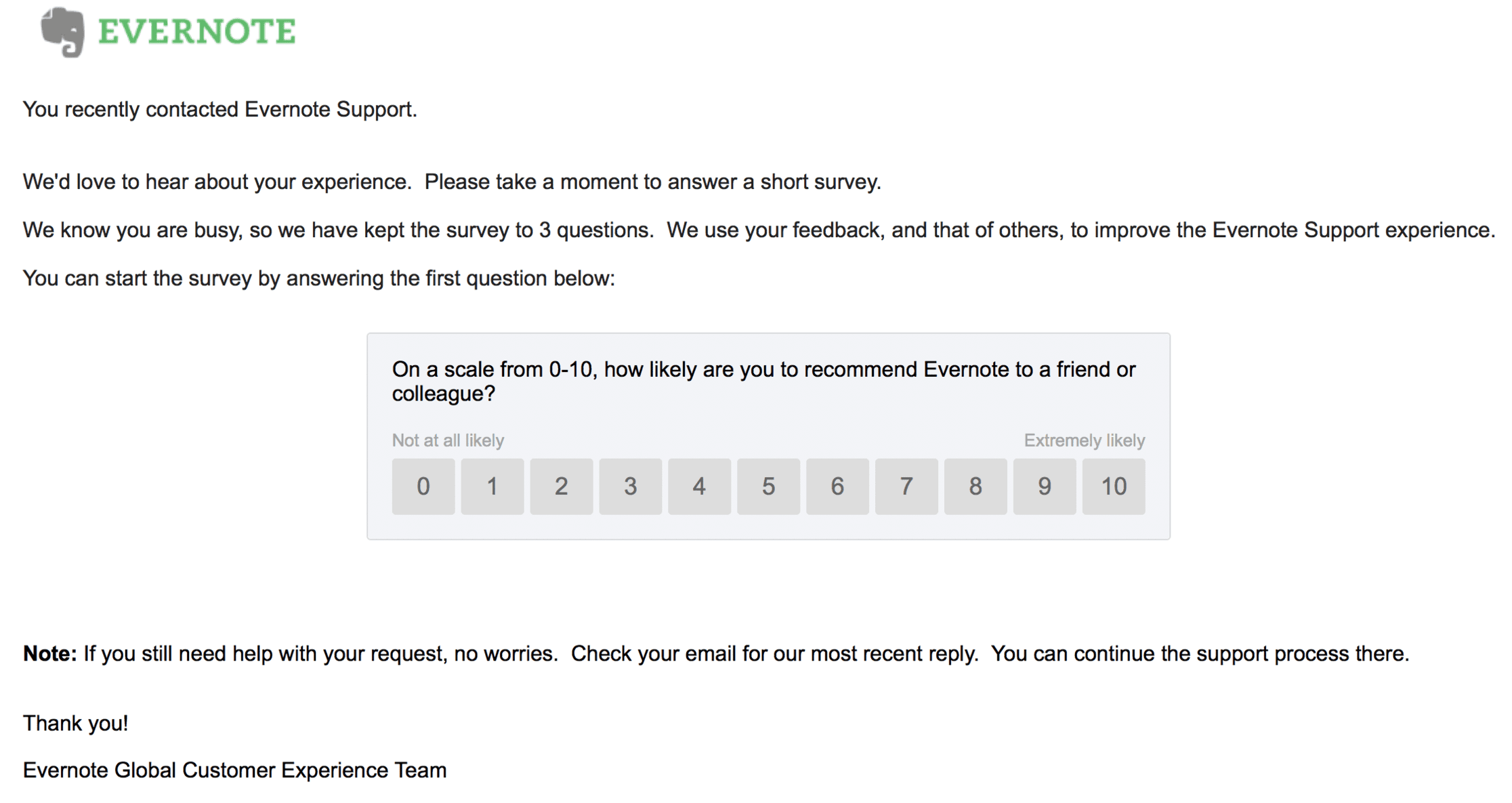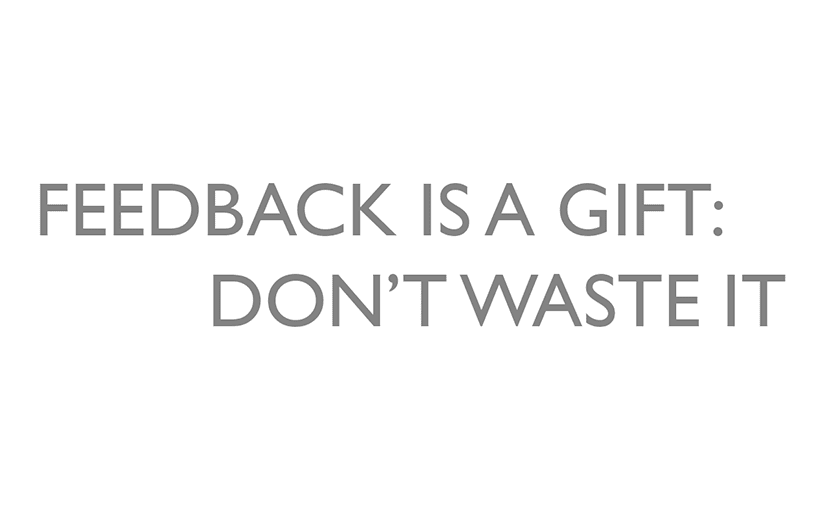This has been republished from LinkedIn
Right under the wire (OK, OK, it’s over the wire), here’s my second installment of the #IronSharpensIron series I started two weeks ago. I had intended to write about a masterful gamification program run by a company we all know, but that article will take more effort to pull together that I had time for this week, and a different topic fell into my lap today.
Everyone who sends email knows that depending on the campaign, even a 5% open rate can be seen as an excellent result. So if a customer not only opens your email, but acts on it, you’ve got a great opportunity to to accomplish something with that customer.
Today I received an email from Evernote support after I’d submitted a support request earlier in the week. Evernote is a tool I’ve used for over a decade, and while I generally like it, there’s a fatal product flaw I discovered when I bought my iMac back in 2015: the audio recording quality is horrendously bad (8,000hz mono WAV files if you’re an audio geek). It has nothing to do with the microphone on the device, and everything to do with the poor quality that an Evernote product manager years ago decided was the right setting to use. Compare that with the much better quality of their iOS app recordings – 44,100hz M4A files – and you have a very uneven customer experience where using their app on a desktop is a more compromised experience than mobile. The Evernote community forums have had dozens and dozens of customers complaining about the same issue over the years. Evernote has never committed to fixing this issue; this sets the stage for my Evernote support ticket.
I emailed and expressed my frustration at having audio recordings of such low quality it was difficult to understand what I was saying in them. Their support tech was helpful – at first he said the poor quality was due to the microphone after he did some tests, but after I provided him the sample files above and explained the technical differences between the way each of their apps records audio, he confirmed my findings and filed an internal feature change request to fix this issue. I couldn’t have asked for anything more than an Evernote employee taking my request seriously and acting on it. I know that doesn’t mean the fix will make it into a future release – I’ve gone through the painful process of stack ranking things I want in my product, knowing I can only get some of them – but it’s better than nothing.
Evernote’s support email system sent me an email today asking for my feedback about the product, and my experience with the technician. I act on these types of emails about 50% of the time, but I was so pleased with that the efforts and helpfulness of the support tech I dealt with, I was eager to reply. Here’s the email they sent me:

There’s a clear one-click CTA: give us your feelings about Evernote as a product. Given my frustration with Evernote not fixing this issue for years, I clicked on the number five and it took me to a page that asked three questions: the product rating question again, a rating for the support technician (I gave him a 10), and an open comment field for why I gave the tech that rating. But no field to explain why I gave their product a five out of ten.
If you have a customer who’s willing to explain why they gave you a negative product rating, why wouldn’t you take advantage of that? Why not have a branching survey with a few more questions to understand the nature of the frustration? Heck, take a small percentage of those and offer to let the customer talk directly to a member of the product management team. Far too many product teams hide behind their anonymity and don’t get down into the trenches with the people actually using their products.
Feedback is a gift, and not receiving the full measure of that feedback squanders it.
Settling for a single NPS-style score tells you nothing other than you have an unhappy customer. There’s no greater gift a company can get from their customers than an understanding of what they can improve to make that customer happy with it again.
Have you seen examples lately of companies not taking advantage of feedback from their customers? How does your company treat customer feedback? Let me know in the comments below.
